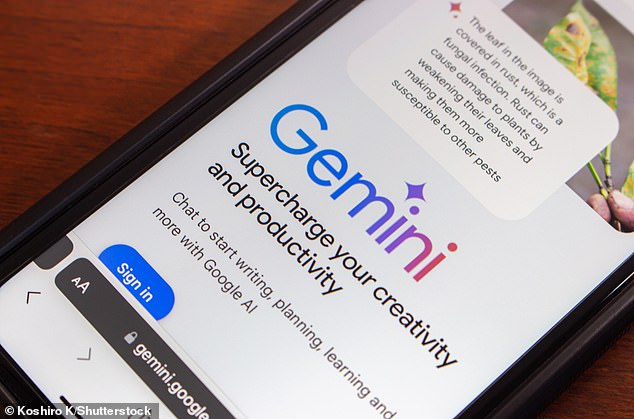Google’s carbon emissions are higher than ever due to AI’s energy needs, tech giant admits
Google is emitting more greenhouse gases than ever before, with carbon emissions increasing by 48 percent over the past five years.
This is despite the tech giant’s intention to produce net zero emissions by 2030.
Google’s latest environmental report shows that greenhouse gas emissions were 13 percent higher in 2023 than in 2022, producing the equivalent of 14.3 million tons of CO2.
This is comparable to the amount of CO2 emitted annually by approximately 29 gas-fired power plants.
The main reason for this was increased energy consumption of data centers and their supply chain, the report said, as well as artificial intelligence (AI).
Google’s latest environmental report shows that greenhouse gas emissions were 13 percent higher in 2023 than in 2022, equivalent to 14.3 million tons of CO2.
According to the company, AI – which uses a lot of computing power and therefore electricity – is increasing the company’s energy consumption and making reducing emissions a “challenge”.
The increase in emissions occurred despite Google increasingly using clean energy generated by solar and wind power, which do not emit emissions like fossil fuels (such as coal and gas).
“Despite the progress we are making, we face significant challenges that we are actively working to address,” Chief Sustainability Officer Kate Brandt and Senior Vice President Benedict Gomes said in the report.
‘As we further integrate AI into our products, reducing emissions may become a challenge due to the increasing demand for energy from the greater intensity of AI computing technology and the emissions associated with the expected increase in our investments in technical infrastructure.’
In January, Google pledged to invest $1 billion (£788 million) in the UK to build a new data centre in response to demand for AI.
Mainly due to the success of competitor ChatGPT, Google is investing heavily in AI as part of its Gemini chatbot tool and in software on its smartphones.

Google is pushing AI into its smartphones and search tools, including Gemini, its version of OpenAI’s ChatGPT
Google isn’t the only tech company facing the challenge of powering energy-hungry AI data centers while also limiting climate-changing greenhouse gas emissions.
Microsoft reported in its recent sustainability report that greenhouse gas emissions increased 29 percent last year compared to 2020, as the company continues to “invest in the infrastructure needed to develop new technologies.”
Microsoft and Google have been leaders in the AI race since OpenAI released ChatGPT in late 2022.
AI has been a theme for rival companies quarter after quarter in terms of blockbusters.
Meanwhile, Google and Microsoft have both pledged to be carbon neutral by the end of this decade.
Microsoft aims to be carbon negative by 2050, meaning there will be no more harmful gases in the air.
Amazon, which is also an AI contender with its AWS cloud computing division, has indicated that it aims to be carbon neutral by 2040.
